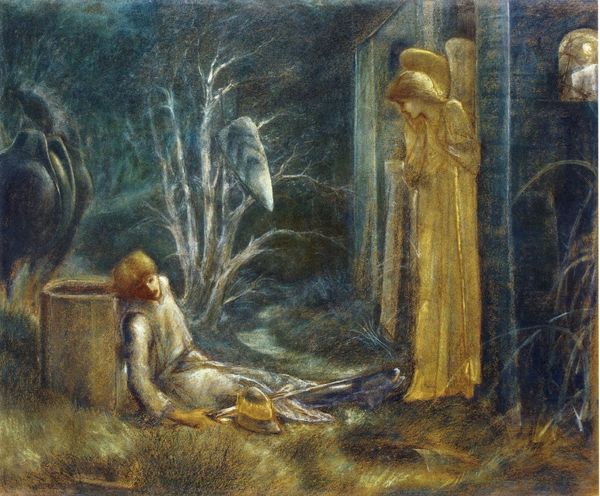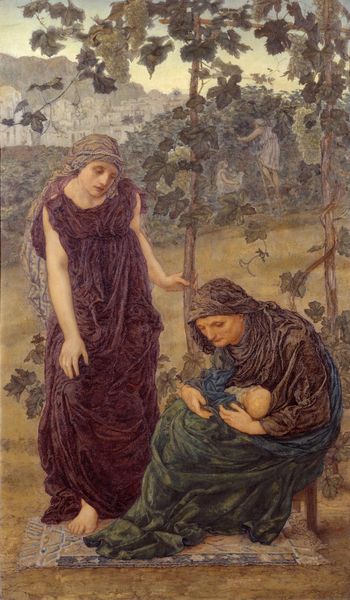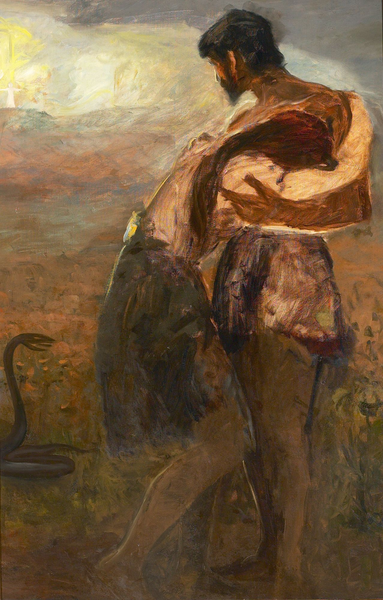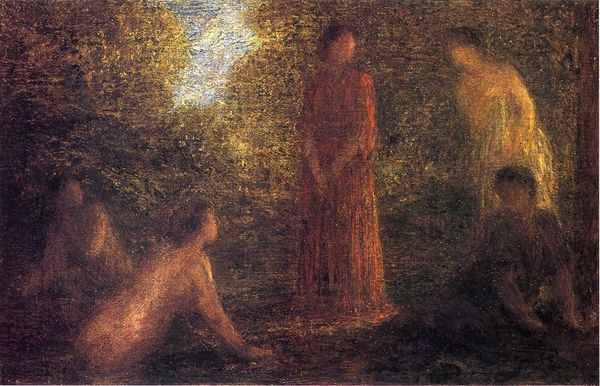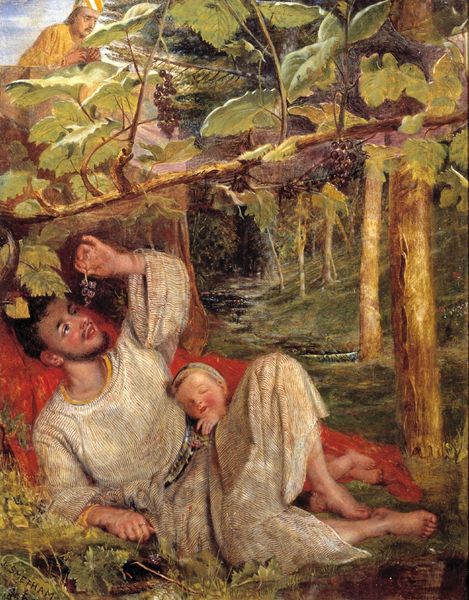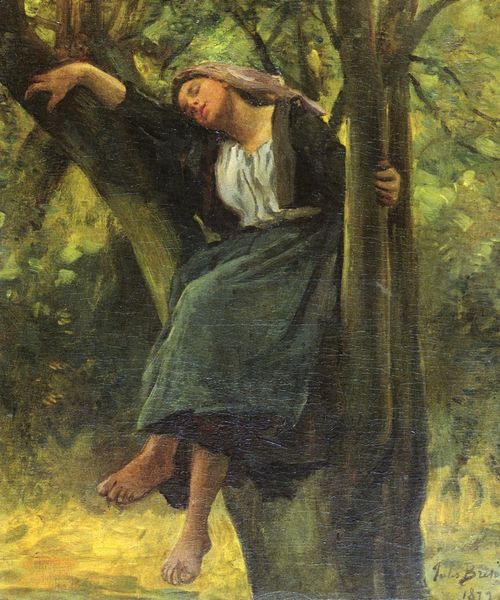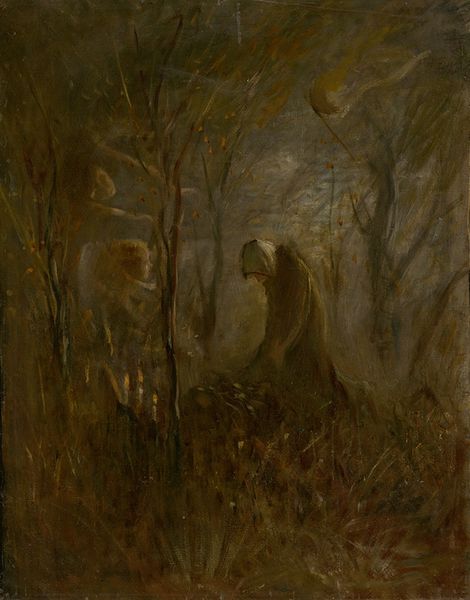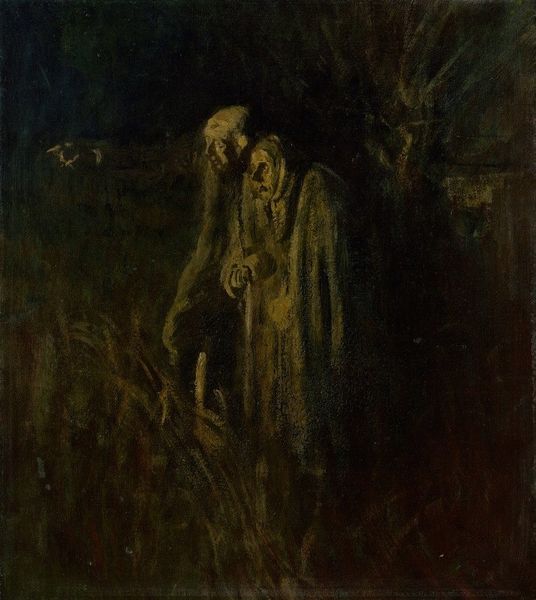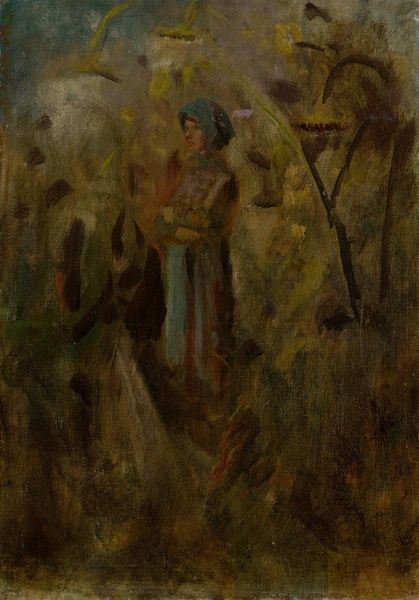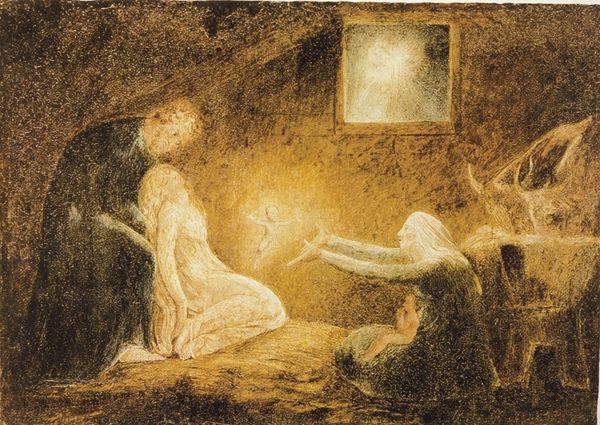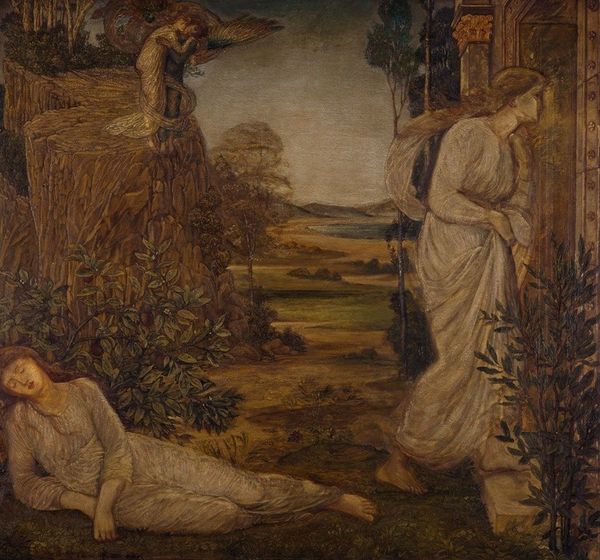
painting, oil-paint
#
portrait
#
painting
#
impressionism
#
oil-paint
#
landscape
#
oil painting
#
folk-art
#
genre-painting
#
realism
Dimensions: 29.8 x 37.4 cm
Copyright: Public domain
Curator: Jean-François Millet, although we don't have a precise date for it, gives us in “Gathering Apples” a glimpse into rural life through his characteristic realist lens, using oil paint. Editor: My first impression is the colour. It's almost monochromatic. That deep, autumnal warmth makes me feel like wrapping myself in a knitted blanket. There’s a simplicity to it; almost meditative. Curator: I think that meditation emerges from his social consciousness. Millet elevated the rural worker to a noble, almost heroic figure. He depicted these scenes with immense dignity, and that certainly resonated with socialist ideologies of his time. Editor: Dignity, yes, I see it. But there's also, dare I say, a subtle commentary on the labor itself. The bending, the reaching – it's repetitive, unending. It evokes a powerful image, both grounding and slightly heartbreaking. Curator: Right, exactly! While he avoids explicit critique, there's a palpable sense of the inherent burdens and the persistent toil. This idea of labor takes on a deeper political resonance, echoing concerns about class and exploitation that are ever-present even now. Editor: The composition is rather lovely, how the figures nestle amongst the trees and the basket, giving it a sense of almost biblical humility. Yet the single male figure pulling down the branches—he represents such a contrast to the grounded figures below. Is this a depiction of labor relations? Curator: It's possible to read gender and labour dynamics into the arrangement. I wonder, too, how Millet saw his own position as an artist observing and portraying these communities. He himself came from a peasant background. How could his own memories affect his portrayal of folk life? Editor: Food for thought, definitely! Ultimately, Millet painted what he felt. His perspective gives us space to reflect, question, and, hopefully, act in solidarity with the figures that ground his canvases. Curator: Well, it certainly opens the doors to a dialogue between past and present. It highlights how deeply entrenched labor struggles and rural identities are within the narrative of art history and beyond.
Comments
No comments
Be the first to comment and join the conversation on the ultimate creative platform.
